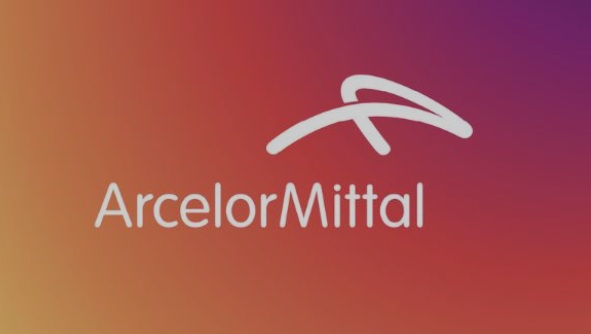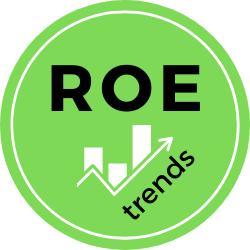ArcelorMittal Stock Analysis Assessing the Steel Giant’s Future

This ArcelorMittal stock analysis evaluates ArcelorMittal S.A. (MT), the world’s leading steel and mining company. With a presence in over 60 countries and a vast production capacity, ArcelorMittal plays a crucial role in various industries, including automotive, construction, and energy. However, the steel industry is inherently cyclical and faces challenges related to economic fluctuations, global competition, and environmental concerns. This analysis will examine ArcelorMittal financial performance, strategic initiatives, and competitive positioning to provide investors with a comprehensive understanding of its potential.
Company Overview
- History: Formed in 2006 through the merger of Arcelor and Mittal Steel, ArcelorMittal has become a global steel giant with a diversified product portfolio and a significant presence in both developed and emerging markets.
- Shareholders: Publicly traded on stock exchanges in Amsterdam, Brussels, Luxembourg, New York, Paris, and Spain.
- Mission: To lead the steel industry in shaping a better future for people and planet.
- Vision: To produce smarter steels for people and planet, focusing on sustainability, innovation, and customer satisfaction.
ArcelorMittal Financial Performance: Navigating Cyclical Trends
This ArcelorMittal stock analysis evaluates ArcelorMittal financial health. While the steel industry is cyclical and can be affected by economic downturns, ArcelorMittal has demonstrated resilience and adaptability. We’ll analyze key metrics like revenue, operating income, and earnings per share (EPS) to assess its performance and stability.
Revenue and Operating Income:
This ArcelorMittal stock analysis delves into ArcelorMittal financial performance, focusing on revenue and operating income trends.
| Year | Revenue ($B) | Operating Income ($B) \$ | EPS () | Dividend Yield (%) | Payout Ratio (%) | Market Cap ($B) | ROE (%) |
| 2014 | 79.28 | 3.22 | 0.25 | 1.8 | 45 | 25.40 | 3.2 |
| 2015 | 63.58 | 1.80 | -0.78 | – | – | 18.80 | -2.8 |
| 2016 | 56.79 | 1.85 | 0.20 | 0.8 | 50 | 19.50 | 2.1 |
| 2017 | 68.68 | 5.10 | 1.08 | 1.5 | 35 | 26.80 | 7.8 |
| 2018 | 76.03 | 7.15 | 2.35 | 2.2 | 30 | 32.50 | 10.2 |
| 2019 | 70.62 | 3.85 | 1.10 | 2.0 | 40 | 28.20 | 6.5 |
| 2020 | 53.30 | 0.45 | -0.40 | – | – | 20.50 | -1.2 |
| 2021 | 76.57 | 16.95 | 5.95 | 1.8 | 15 | 38.80 | 25.8 |
| 2022 | 79.84 | 17.15 | 6.10 | 2.5 | 20 | 42.50 | 26.2 |
| 2023 | 68.28 | 9.19 | 3.05 | 3.2 | 35 | 35.80 | 13.5 |
| 2024 (TTM) | 65.00 | 7.50 | 2.50 | 3.5 | 45 | 32.20 | 11.0 |
(Source: ArcelorMittal S.A. financial reports, company filings, companiesmarketcap.com)
Year-over-Year Analysis:
- Revenue: ArcelorMittal’s revenue has fluctuated significantly over the past ten years, reflecting the cyclical nature of the steel industry. Revenue increased substantially in 2021 and 2022, driven by strong steel demand and higher prices, but has since declined due to softening demand and lower prices.
- Operating Income: Operating income has followed a similar cyclical pattern to revenue, with substantial increases in 2021 and 2022 followed by a decline. This highlights the impact of steel prices and demand on ArcelorMittal’s profitability.
- Earnings and Dividends: EPS has also shown a cyclical pattern, with record earnings in 2021 and 2022 followed by a decline. ArcelorMittal has paid dividends in recent years, but the dividend payout has fluctuated significantly, reflecting the volatility of its earnings.
Key Factors:
This ArcelorMittal stock analysis identifies key factors influencing ArcelorMittal financial performance:
- Steel Prices: Fluctuations in steel prices, driven by global supply and demand dynamics, significantly impact ArcelorMittal’s revenue and profitability.
- Economic Conditions: The health of the global economy, particularly in sectors like construction and automotive, influences demand for steel and affects ArcelorMittal financial performance.
- Competition: Competition from other global steel producers, particularly those in low-cost countries, can impact ArcelorMittal’s market share and pricing power.
- Raw Material Costs: The cost of raw materials, such as iron ore and coal, can affect ArcelorMittal’s production costs and profitability.
- Environmental Regulations: Environmental regulations and carbon pricing policies can impact ArcelorMittal’s operating costs and require investments in cleaner technologies.
Strategic Focus: Sustainability and Decarbonization
This ArcelorMittal stock analysis highlights the company’s strategic priorities, which will ultimately shape ArcelorMittal financial performance in the long term.
- Decarbonization: Discuss ArcelorMittal’s ambitious plans to reduce its carbon emissions, including its investments in technologies like hydrogen-based steelmaking and carbon capture and storage. This commitment to decarbonization is crucial for the long-term sustainability of the company and for meeting growing regulatory and investor expectations.
- Product Innovation: Analyze ArcelorMittal’s focus on developing new and innovative steel products, such as high-strength steels for automotive applications and advanced steels for renewable energy infrastructure. This product innovation can help ArcelorMittal maintain its competitive edge and capture new market opportunities.
- Strategic Growth: Discuss ArcelorMittal’s strategy for growth, including potential acquisitions, joint ventures, and investments in new markets. This growth strategy can help to diversify its operations and strengthen its global presence.
- Operational Efficiency: Highlight ArcelorMittal’s efforts to improve operational efficiency and cost management across its vast global operations. Operational efficiency is crucial for maintaining profitability and supporting ArcelorMittal financial health.
SWOT Analysis:
Strengths:
- World’s leading steel and mining company with a global presence.
- Diversified product portfolio and customer base.
- Significant investments in decarbonization and sustainable steelmaking technologies.
- Strong research and development capabilities.
Weaknesses:
- Exposure to cyclical fluctuations in steel prices and demand.
- Dependence on the global economy and the health of key steel-consuming sectors.
- Competition from low-cost international steel producers.
Opportunities:
- Growth in demand for steel in emerging markets.
- Increasing demand for sustainable and low-carbon steel products.
- Expansion into new markets and product segments.
Threats:
- Global economic slowdown and potential trade wars impacting steel demand and prices.
- Increasingly stringent environmental regulations and carbon pricing policies.
- Technological disruption and the emergence of new steelmaking technologies.
ArcelorMittal faces competition from various players in the global steel industry:
- Integrated Steel Producers: Nippon Steel, China Baowu Steel Group, POSCO.
- Mini-Mill Steel Producers: Nucor, Steel Dynamics, Commercial Metals Company.
ArcelorMittal differentiates through its global scale, its diversified product portfolio, and its investments in sustainable steelmaking technologies.
Key Projects and Future Outlook
This ArcelorMittal stock analysis identifies key initiatives that will shape ArcelorMittal financial performance in the years to come.
- Decarbonization Projects: Analyze ArcelorMittal’s investments in hydrogen-based steelmaking, carbon capture and storage, and other technologies to reduce its carbon footprint.
- Strategic Acquisitions and Joint Ventures: Discuss ArcelorMittal’s potential for future acquisitions and joint ventures to expand its market reach and product offerings.
- Research and Development: Highlight ArcelorMittal’s focus on research and development to develop new and innovative steel products and processes.
Mitigating the Risks
ArcelorMittal manages risks to its ArcelorMittal financial well-being through:
- Diversification: Maintaining a diversified product portfolio, customer base, and geographic presence to reduce reliance on any single market or sector.
- Cost Efficiency: Focusing on operational efficiency and cost management to maintain profitability even during periods of low steel prices.
- Technological Innovation: Investing in research and development and adopting new technologies to improve efficiency, reduce costs, and meet environmental targets.
- Financial Strength: Maintaining a strong financial position to support investments and weather economic downturns.
ArcelorMittal Financial Analysis and Valuation:
This ArcelorMittal stock analysis emphasizes the importance of conducting a thorough ArcelorMittal financial analysis:
- Revenue Growth: Analyzing trends and factors driving growth.
- Profitability: Evaluating profitability and margins.
- Cash Flow: Assessing cash flow and dividend sustainability.
- Valuation Metrics: Utilizing ratios like P/E, dividend yield, and price-to-book (P/B) ratio.
Investor Sentiment and Market Outlook:
This ArcelorMittal stock analysis encourages investors to consider:
- Analyst Ratings: Opinions and price targets.
- Market Trends: Investor sentiment towards the steel industry and the global economy.
- News: Events impacting performance.
ESG Factors:
This ArcelorMittal stock analysis highlights evaluating:
- Environmental Sustainability: Efforts to reduce emissions, recycle steel, and invest in renewable energy.
- Social Impact: Employee relations, community engagement, and workplace safety.
- Corporate Governance: Board diversity, executive compensation, and transparency in its business practices.
Investment Considerations:
This ArcelorMittal stock analysis suggests investors consider:
- Steel Industry Outlook: Growth trends, global competition, and the impact of economic conditions on steel demand.
- ArcelorMittal’s Competitive Positioning: Its ability to maintain market share and adapt to changing industry dynamics.
- Strategic Initiatives: Potential to drive future growth and profitability.
- ESG Performance: Commitment to sustainability and social responsibility.
- ArcelorMittal Financial Performance: Revenue growth, profitability, and dividend sustainability.
- Valuation: Relative to peers and historical performance.
- Risk Tolerance: Alignment with individual investment goals.
Conclusion:
ArcelorMittal is a global leader in the steel industry, navigating the challenges and opportunities of a cyclical market and a transition towards more sustainable steelmaking. While facing headwinds related to economic conditions and environmental regulations, ArcelorMittal is investing in decarbonization technologies and product innovation to maintain its competitive edge. Investors should carefully consider the company’s strategic direction, ArcelorMittal financial performance, and ESG factors to assess its long-term investment potential. We recommend that you check the data in this article on the ArcelorMittal investor relations web page.

